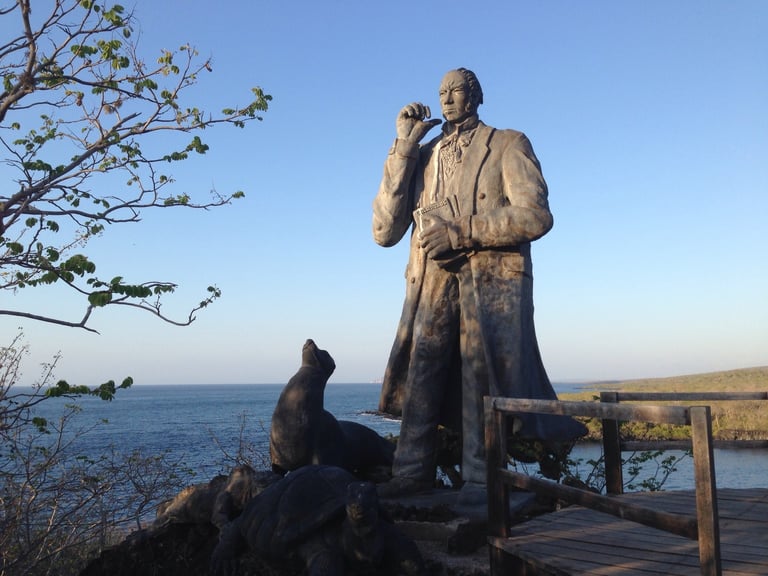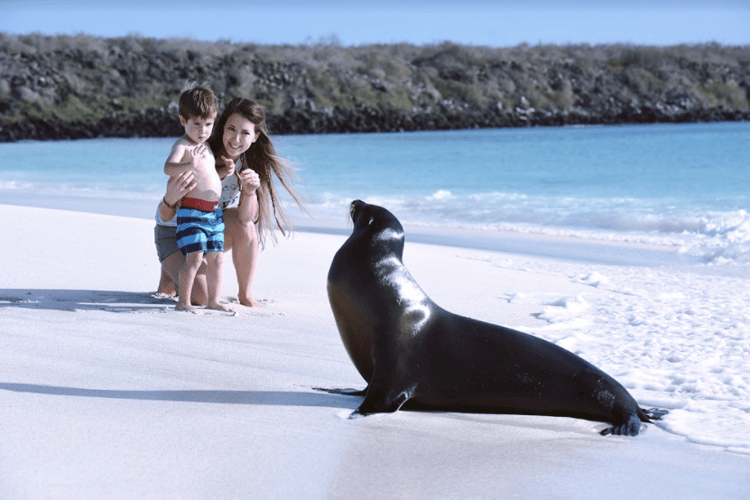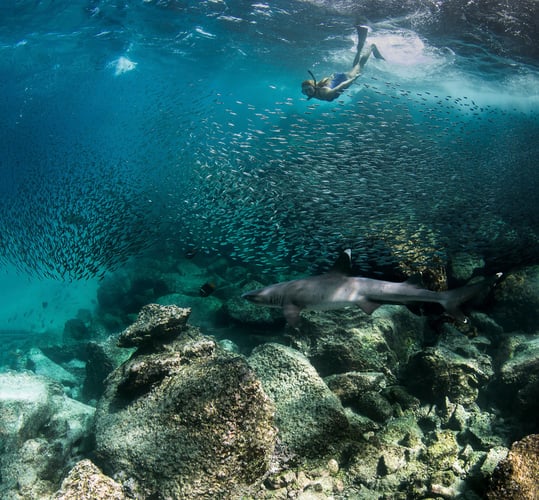Have You Ever Wanted to Walk in Darwin's Footsteps?

If you hear the name Charles Darwin, most people immediately think, “theory of evolution” or about On the Origin of Species. The next thing that often comes to mind is the Galapagos Islands, the richly bio-diverse locale that became Darwin’s living, breathing laboratory.
Both Darwin and the Galapagos have captivated the world’s interest for years. Not just because of the wild, pristine beauty of the Galapagos that still exists today, but because of one man’s fascinating journey into science.
The Birth of a Theory
When Charles Darwin arrived in the Galapagos in the 1800s, he didn’t know that the islands would hold such significance for his thoughts and theories in the world of natural science. As a budding brilliant mind, the Galapagos quickly captivated him.
Upon first glance, it seemed that the islands were dry, yet beautiful, but not the tropical paradise he initially expected. The lava flows of San Cristobal (the site of his initial landings) fascinated him, but he was still unaware of what was to come.
However, as he continued on his journey, he began to realize the diversity between the islands, but more importantly, the adaptations of the animals depending on location. This would become the birth of his famed theory, and later, the subject of his book.
Darwin’s Need for Proof: How the Galapagos Answered
Darwin was a man who needed proof to believe. The Galapagos was the site of numerous journals, which upon review held important notes—ones that proved that there were variations between the animals on each island.
He noticed differences in features and sizes, and how the animals had adapted to the environmental features of each island. By the time he reached the end of his 5-week visit in October of 1835, he had enough information to realize the significance of this small, yet rich environment. He also began to realize the speed at which the evolution had occurred in the Galapagos, making them a place of great importance to science and the world.
Walking in Darwin’s Footsteps
Today, the Galapagos Islands still serve as a living laboratory. Anyone who has wanted to walk in Darwin’s footsteps will find a place that still boasts the same proof – that species will adapt to their environments.
This makes the Galapagos a draw for people interested in history, science, and adventure. The location’s integrity has been preserved for generations, and as a result, it's possible for people to follow the same path of Darwin and see the same things he did. With different cruises and tours to choose from, you can:
- Study the famed Galapagos tortoises. Many of the itineraries include a visit to the Charles Darwin Research Station & Fausto Llerena Breeding Center on Santa Cruz. Here you can learn more about the large creatures that fascinated Darwin. You will also be able to view the tortoises and make notes of your own.
- Peruse the incredible birds of the Galapagos. Each itinerary leads you to islands with huge populations of birds—many of them are the species that showed the variations that created Darwin’s theories.
- Visit the same islands and see the same sites Darwin did. Visit San Cristobal, see volcanoes, and go to other locations where Darwin walked.
A Historical Journey
You don’t have to subscribe to Darwin’s theories or conduct scientific research to appreciate the historical significance of the Galapagos Islands. Don't worry, you don't have to be an experienced scientist – Darwin himself was an amateur when he first visited! All you need to have an incredible experience in the Galapagos is an interest in beauty, wild terrain, geology, flora, and fauna.
In the Galapagos, you’ll see many animals and how they behave in their natural setting. You’ll also get to walk in timeless environments that host unique plant life and stunning views.
You’ll also be able to learn more about a man who had a huge impact on the world. Learn facts to take home with you, like that Darwin got seasick, or that it took him until 1858 to share his theories with the world.
The Galapagos Islands are an ideal travel destination for those with a thirst for knowledge, and it makes them one of the most unique and interesting places in the world to visit.




